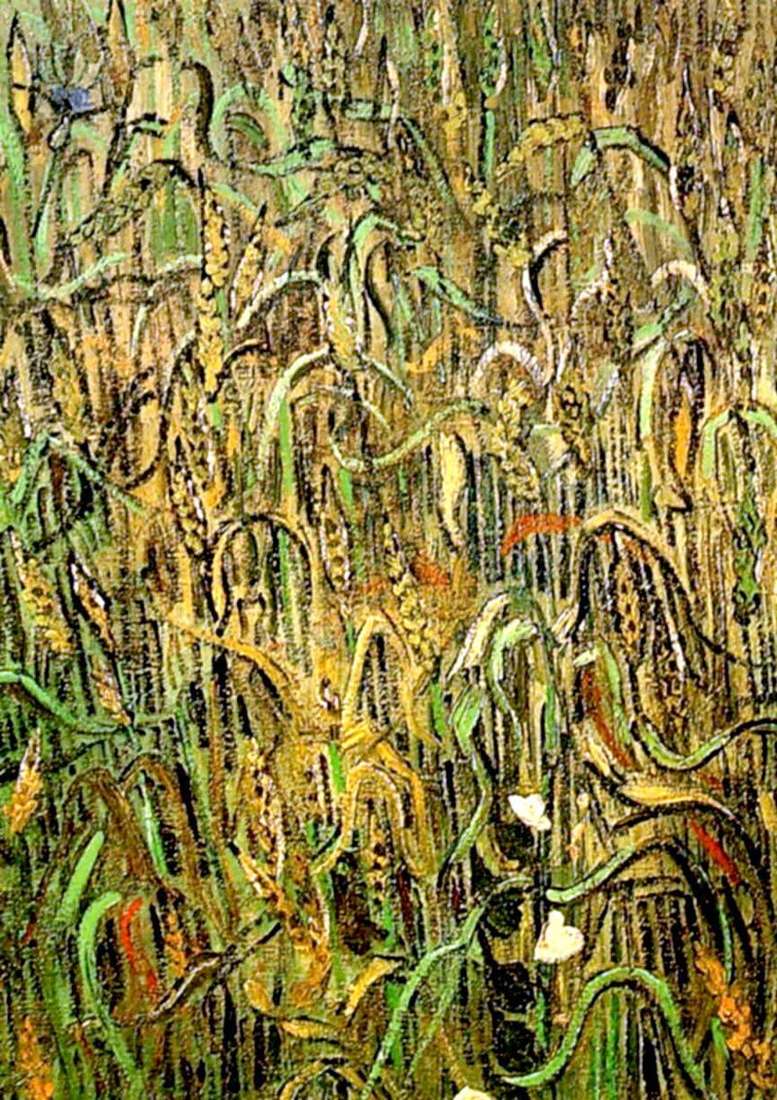
The cereal fields surrounding Arles were for Van Gogh an endless source of inspiration. He portrayed them at different seasons and in different states. Fields appeared on his canvases empty or with peasants working for them. The artist could draw their vast expanses or separate corners, but could concentrate on one small detail.
In this landscape of 1888, Van Gogh depicted several ears of wheat that had not yet ripened. The composition of the picture is open, in the background we see a wide field stretching to the horizon. Trees merge with the blue of the sky, which makes the landscape light and airy. The field is written with juicy brown-red and ocher flowers. When writing the land, Van Gogh used the technique of pointillism to show the whole variety of its pure shades.
The main “heroes” of the canvas are a few thin green spikelets in the foreground. With quick accurate strokes, Van Gogh depicts their thin leaves and stems. The greenness reflects the blue of the sky, and the thin stems rise against the background of a light-flooded field. Painting the ears, Van Gogh seemed to want to show the infinite beauty of every detail, every small blade of grass. Looking at the picture, the viewer involuntarily understands that in nature there is nothing that does not deserve human attention.
 Wheat ears by Vincent Van Gogh
Wheat ears by Vincent Van Gogh Green wheat field with cypress by Vincent Van Gogh
Green wheat field with cypress by Vincent Van Gogh Wheat Field with Cornflowers by Vincent Van Gogh
Wheat Field with Cornflowers by Vincent Van Gogh Green wheat fields by Vincent Van Gogh
Green wheat fields by Vincent Van Gogh Farmhouse on a wheat field by Vincent Van Gogh
Farmhouse on a wheat field by Vincent Van Gogh Wheat field and the foothills of the Old Alps in the background by Vincent Van Gogh
Wheat field and the foothills of the Old Alps in the background by Vincent Van Gogh Wheat fields, the plain of Over by Vincent Van Gogh
Wheat fields, the plain of Over by Vincent Van Gogh Landscape with crew and train in the background (Landscape in Auvers after rain) by Vincent Van Gogh
Landscape with crew and train in the background (Landscape in Auvers after rain) by Vincent Van Gogh